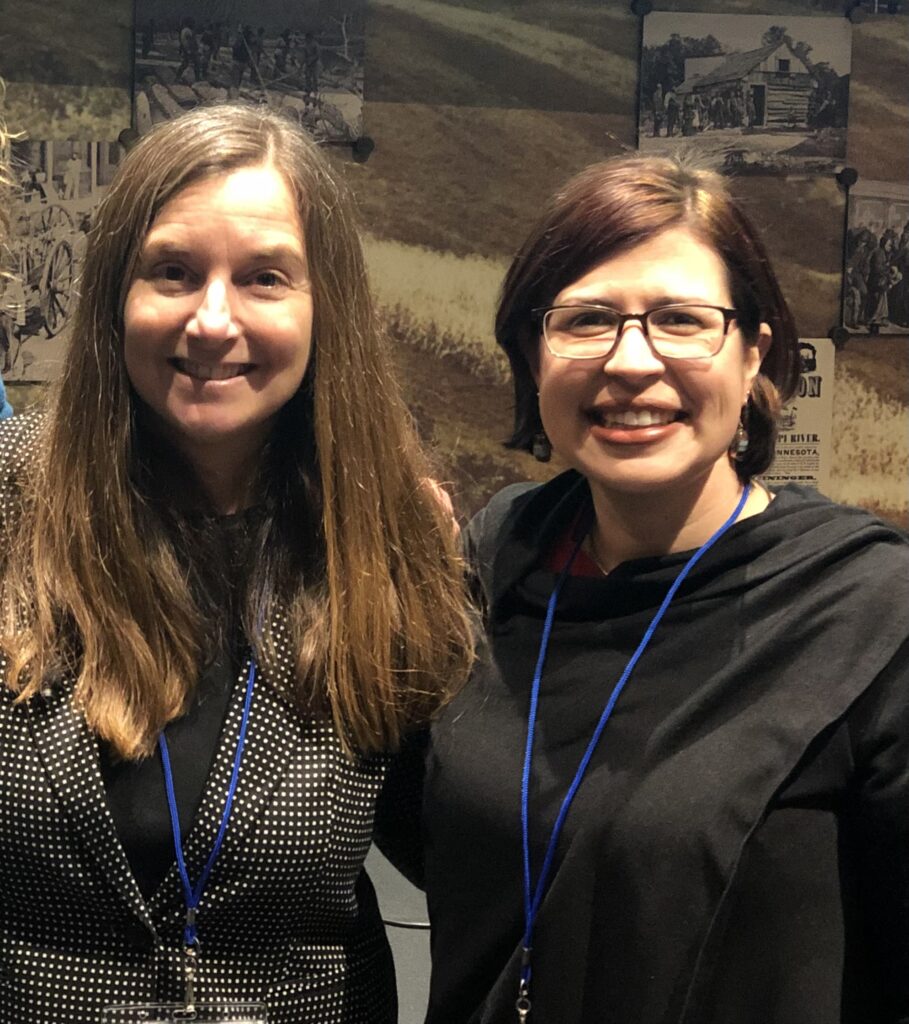Change Starts from the Inside: A Values-Aligned Leadership Transition

As the Mortenson Family Foundation further defined its mission, Foundation Executive Director Donna Dalton considered how to lead the organization in a way that centered community. Ultimately, Donna made a values-aligned decision to make space for a new leader who was more proximate to the Foundation’s mission and poised to usher the organization into a new era.
So many individuals, me included, are committed to making positive change in the world. In philanthropy, many of us dedicate significant amounts of time and thought to making change that is external to ourselves or our organizations—change that happens to and for, and maybe with, other individuals or communities.
As someone who held the role as an executive director of Mortenson Family Foundation for 13 years, I have had some time to reflect on how positive change is made. So often, for funders, the focus of making positive change happens out in community, and indeed it is community leaders and nonprofit partners who are responsible for much of the change we see. However, I have come to see internal change—to a foundation’s power, policy, and practices—is a critical component of providing effective support to communities.
As a white female family foundation leader, I was aware of the demographics of the sector’s executive leadership—only 13 percent of top leadership roles at foundations are filled by people of color, according to Exponent Philanthropy’s 2022 survey. While trustees typically hold the majority of power in a foundation structure, executive leadership has its fair share of power in day-to-day operations and decision making. Although I did see significant leadership gaps, I didn’t see our sector taking many actions to change who held power.
Defining the Mission as the Anchor
While Mortenson Family Foundation was founded in 1999, it started formalizing its work in 2010 when I arrived as its first staff member. Because philanthropy is an expression of values, the Foundation started its work by anchoring itself in its values. The board asked to live into its values before determining its mission. In 2017, the board was ready to establish its mission and relied on its significant experience in working with community to arrive at a mission that included advancing equity and centering community. After codifying the mission, we began aligning every aspect of “what” the Foundation’s work was and also “how” the Foundation’s work was done to meet the Foundation mission. I also began reflecting upon who I was as the Foundation leader and how I was going to lead into that mission.
A component of “how” the Foundation would meet its mission was through a commitment the board made to increase grants to BIPOC-led organizations and organizations led by and for community. In order to act upon that commitment, we started asking prospective grantee partners about the demographics of their board and staff leadership. If the same question had been asked of us, our own answers would include a white leader and 90% white board—not very reflective of the communities we wanted to support.
Supporting New Talent
Once again, I questioned if I was holding the Foundation back from meeting its mission of centering community, recognizing the limitations of my lack of proximity to the communities we wanted to center. I had long believed in leading with values; I started to understand that by continuing in the leadership role that I was not aligned with my personal values of advancing equity. As the Foundation was living into its mission, I had been hiring a staff team from communities proximate to our work—all whom identified as individuals from communities of color, none of whom had prior foundation experience, and all whom had an amazing depth and breadth of competencies. Funders can teach grantmaking skills and philanthropic knowledge; they can’t teach the lived experiences and proximate relationships.

Donna Dalton (L) and Ambar Cristina Hanson (R)
I was intentional about helping to grow the skills of the team in the ways the team members themselves wanted to grow. I knew that one of the team members, Ambar Cristina Hanson, had the goal of running a foundation. Ambar has outstanding leadership competencies and wanted more opportunities to learn about the administration of a foundation and to work directly with the board. Whenever learning opportunities arose, Ambar and I made the time to dig deep into the learning—not just the “what” of the subject, but also the “why” of the subject. I was intentional to include Ambar in the development of the work and ask her to lead in presenting to the board about the work, all while ensuring I was supporting her in the way she felt most supported.
Making Space for BIPOC Leadership
As Ambar grew in her foundation knowledge, I grew in my certainty that it was time for me to exit. When I shared my intention, I also shared with the board that I thought Ambar was ready for leadership. I knew that, while I was creating space for a new leader, the board would make the ultimate decision about my successor. And, I believed, that through other work to change the Foundation from the inside, the board was at a place to live into its mission by choosing a proximate leader. The day Ambar was named the next leader of the foundation was a day for celebration, not just for the foundation, but also for the community and myself.
I have lived into my values, something that is really important to me and that I continue to promote for other individuals and foundations. While I was deep in the transition, I had not thought about my next chapter. I held fear about what I was going to do next and uncertainty about how I would earn an income. But I knew one thing for certain: sometimes the most effective leadership requires us to step aside and make space for others. Once the transition was complete, I had time to focus on my next chapter, which has led me to consulting with other funders who are ready to make organizational change. As opportunities have presented themselves, my fear has subsided and has been replaced with optimism for the future.
Long ago, Mahatma Gandhi shared, “If we could change ourselves, the tendencies in the world would also change.” The internal changes an organization makes—and a leader makes—hold the opportunity to make positive change in the world and in ourselves.
Donna Dalton is Principal of Syringa Consulting.
The views and opinions expressed in individual blog posts are those of the author(s) and do not necessarily reflect the official policy or position of the National Center for Family Philanthropy.
